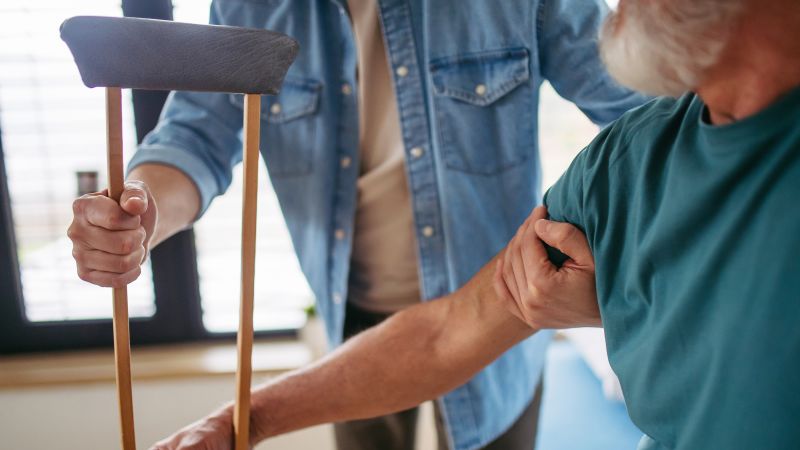Recent findings from the US Preventive Services Task Force (USPSTF) signal a significant shift in recommendations regarding vitamin D and calcium supplementation for older adults. According to the task force’s new draft recommendation, while both vitamin D and calcium are vital for maintaining overall health, there is insufficient evidence to suggest that these nutrients reduce the risk of falls or fractures among generally healthy older adults. This conclusion is particularly noteworthy since it marks the first time men are included in these guidelines.
The USPSTF advises against relying solely on supplemental vitamin D and calcium as a preventive measure against falls and fractures within the older population. While these vitamins may still play an essential role in supporting overall health, the task force emphasizes that older adults should consider alternative strategies to prevent falls or reduce fracture risks.
Historically, in 2018, the task force had recommended against daily supplementation with 400 units or less of vitamin D and 1,000 milligrams or less of calcium specifically for the primary prevention of fractures among postmenopausal women. At that time, they lacked enough evidence to extend similar guidance for men. However, the new draft seeks to update previous recommendations by suggesting that men aged 60 and older should also refrain from supplementation, eliminating references to specific dosage amounts.
Dr. Goutham Rao, a member of the task force, highlights the evolution of research since the 2018 recommendations. He notes that a sufficient number of male participants have been included in studies, leading to the same conclusion on the lack of efficacy in preventing falls and fractures. The task force argues that no specific dosage of vitamin D or calcium correlates with tangible benefits in these areas.
Despite the doubts surrounding supplementation for falls and fractures, Dr. Rao insists on the importance of vitamin D and calcium as vital nutrients for overall wellness. Vitamin D is crucial for calcium absorption and contributes to other bodily functions, such as immune system health, brain function, and muscle performance. The National Academy of Medicine continues to endorse specific daily dietary allowances for these nutrients, essential for overall health.
Dr. Sherri-Ann Burnett-Bowie, an expert not involved in the task force’s recommendations, warns that the draft could be misinterpreted, potentially leading individuals to downplay the importance of vitamin D and calcium altogether. She advises that adults aged one year and older should aim for a daily intake of 600 to 800 units of vitamin D and 700 to 1,200 milligrams of calcium. Notably, many Americans fall short of these requirements, especially among certain racial and ethnic groups, such as non-Hispanic Black or Asian individuals, who demonstrate higher rates of dietary inadequacy.
The draft recommendation specifies that supplementation with vitamin D, with or without calcium, is not recommended for the primary prevention of fractures in generally healthy community-dwelling older adults who are neither in long-term care facilities nor hospitalized. This conclusion is supported by a systematic review that indicated moderate certainty that supplementation did not provide net benefits for fall and fracture prevention.
Moreover, the task force pointed out a potential side effect of vitamin D and calcium supplementation: an increased risk of kidney stones. Although this risk is considered small, it highlights the need for caution when considering supplementation.
The findings published in the New England Journal of Medicine further illustrate that, among middle-aged and older adults, taking vitamin D supplements did not significantly lower the risk of fractures compared to a placebo over a five-year period. Specifically, a study involving over 25,000 adults found no reduction in the incidence of total fractures or hip, wrist, or pelvic fractures associated with taking vitamin D daily.
While these studies offer insights, they are not universally applicable to all populations. Dr. Meryl LeBoff emphasizes that individuals with severe vitamin D deficiency, osteoporosis, or those at high risk of falls should not rule out the importance of these nutrients altogether.
As a significant portion of older adults experiences falls annually—over one in four, leading to serious injuries—practical steps for preventing falls and fractures remain crucial. Recommendations stress the importance of osteoporosis screening, particularly for women aged 65 and up, alongside regular exercise aimed at enhancing strength and balance.
In conclusion, while vitamin D and calcium are undoubtedly important for various bodily functions, reliance on supplementation for preventing falls and fractures among generally healthy older adults appears unwarranted according to the USPSTF’s new recommendations. Instead, the focus should shift towards implementing preventive strategies like osteoporosis screening and engaging in structured exercise to enhance stability and strength, underscoring the multifaceted approach required to maintain health in older adults.












